2002 North Main Street
Santa Ana, California 92706
TEL: 714.567.3600
Skylab and Ford Aeronutronics: A Rise and Fall
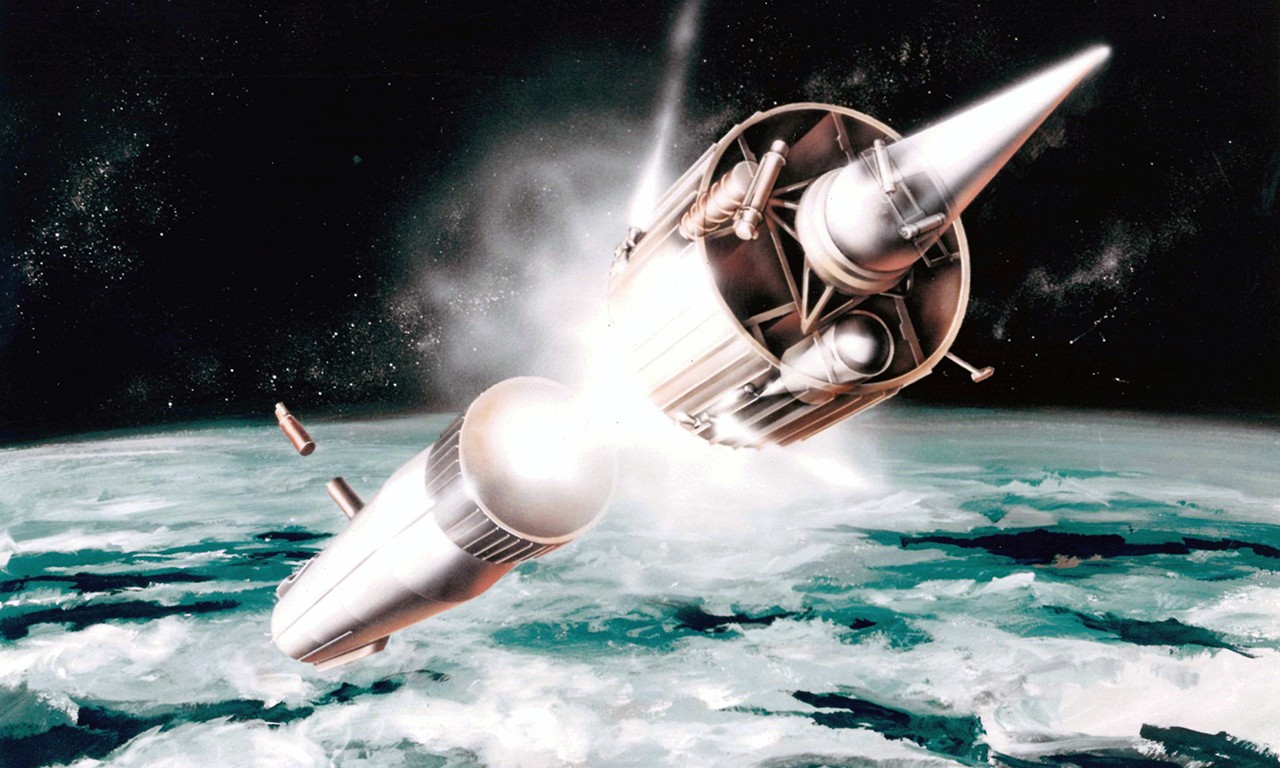 |
| Concept for RVTO-2A Mission 2 (Not Skylab), 1970 Philco Aeronutronic Division, Ford Motor Company; United States Color print on paper; 8 1/2 x 11 in. 92.41.11 Gift of Loral Aeronutronic |
Mothers and Missions to Space
Many will be celebrating May 14, 2023 as Mother’s Day. Here at the Bowers Museum, it is the last day for our breathtaking Guo Pei: Art of Couture exhibition, and as it happens, it is also the 50th anniversary of a major milestone in space exploration: the launch of Skylab, the first U.S. Space Station which was crewed on and off from May 14, 1973 to February of the following year. In this post we will use a donation of photographs and ephemera from Ford Aerospace’s Aeronutronic Division, located right here in Orange County in one form or another between 1957 and the mid ‘90s, to discuss our local area’s contributions to the space program and Skylab.
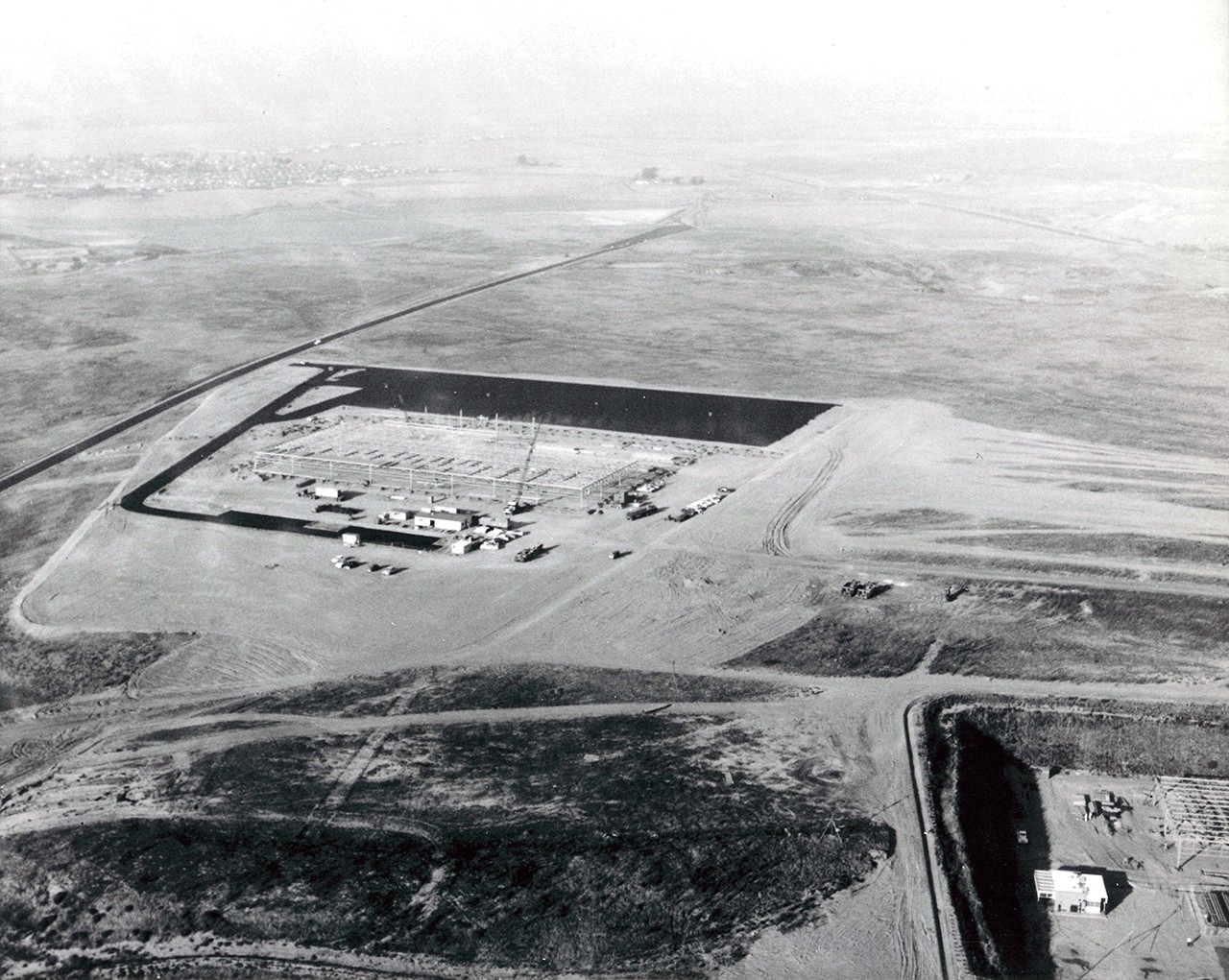 |
| Ford Aeronutronic Facility, January 15, 1958 Aeronutronic Systems Inc., Ford Motor Company; Newport Beach, California Photographic print; 8 1/2 x 11 in 92.41.2 Gift of Loral Aeronutronic |
Cars to the Stars
First off, most are not aware that Ford participated in the development of technologies for the space race, much less that they were one of the key contractors working alongside NASA. In 1956, Henry Ford II made the decision that the Ford Motor Company would establish itself as a “permanent and important contributor to the nation’s missile and space programs.” Thus, Aeronutronic Systems, Inc. was born, its name a synthesis of aeronautics, nucleonics, and electronics, the three fields in which they would develop technologies. Their first headquarters was located in a relatively small building by the Glendale Central Airport. Quickly identifying the need for more space, the company leased 215-acres of land in Newport Beach from the Irvine Company in 1957 and began to build a new headquarters that would employ a staff of about 2,500.
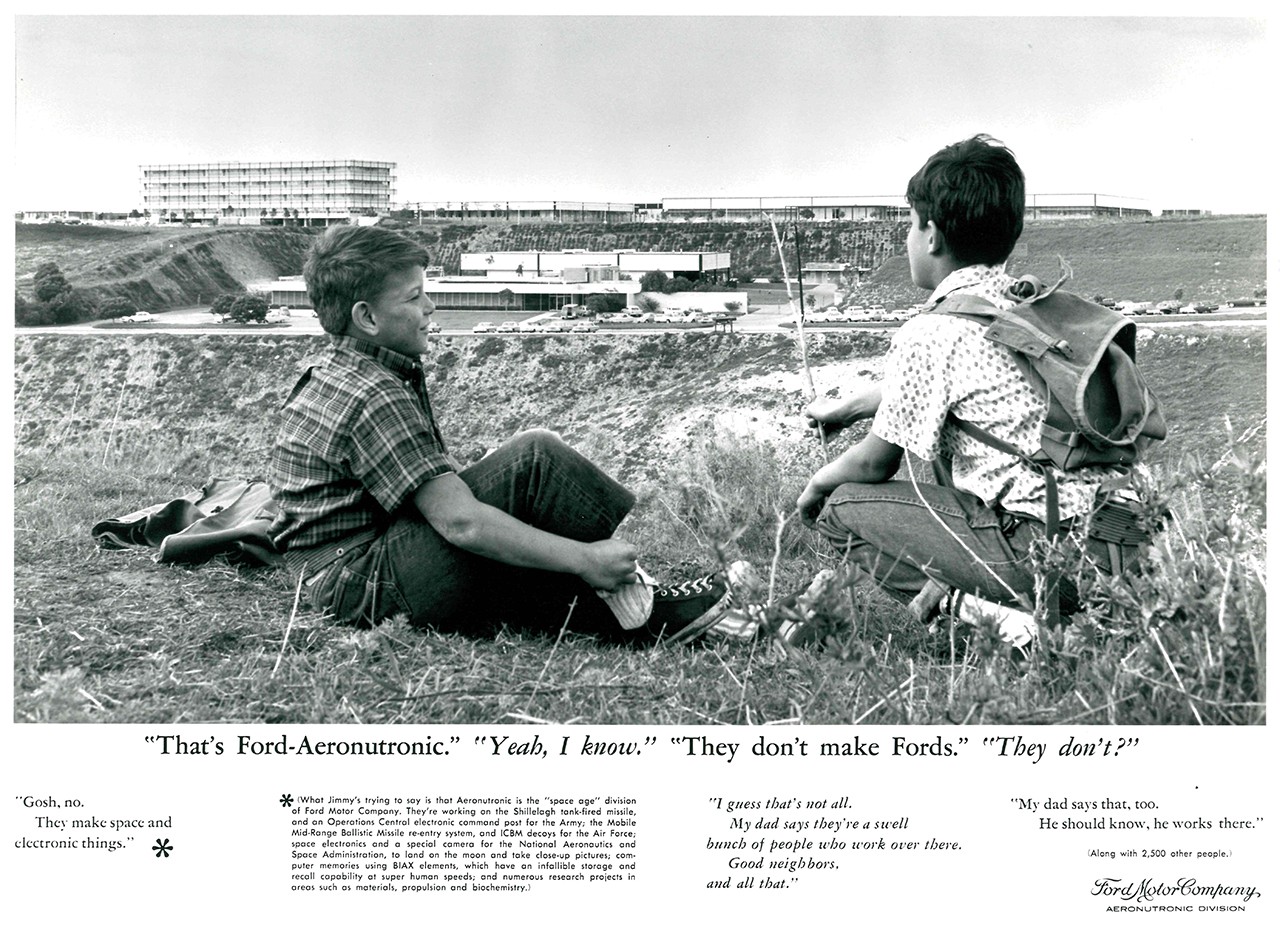 |
| Advertisement for Ford Aeronutronic, 1963 Aeronutronic Division, Ford Motor Company; Newport Beach, California Photographic print; 8 1/2 x 11 in 92.41.14 Gift of Loral Aeronutronic |
Houston, We Have a Mission Control
Early on, Ford Motor Company’s Aeronutronic Division began vying for government and military contracts and were awarded several prestigious ones including those for NASA’s Blue Scout program in 1961. That same year Ford acquired Philco, a rival electronics manufacturer. Ford later merged the two companies into Philco Aeronutronic and later Ford Aerospace. Many of the most impressive accomplishments of Ford Aerospace—NASA’s first Mission Control Center in Houston, work on all of the Apollo missions, and even work on Skylab—can broadly be attributed to the 14 or so offices and complexes under the division’s umbrella. Some items, such as the first man-made object placed on the moon, the Aeronutronic Lunar Capsule, were designed at the Newport Beach facility. By the end of the 1960s, the site had more than doubled to about 6,000 employees.
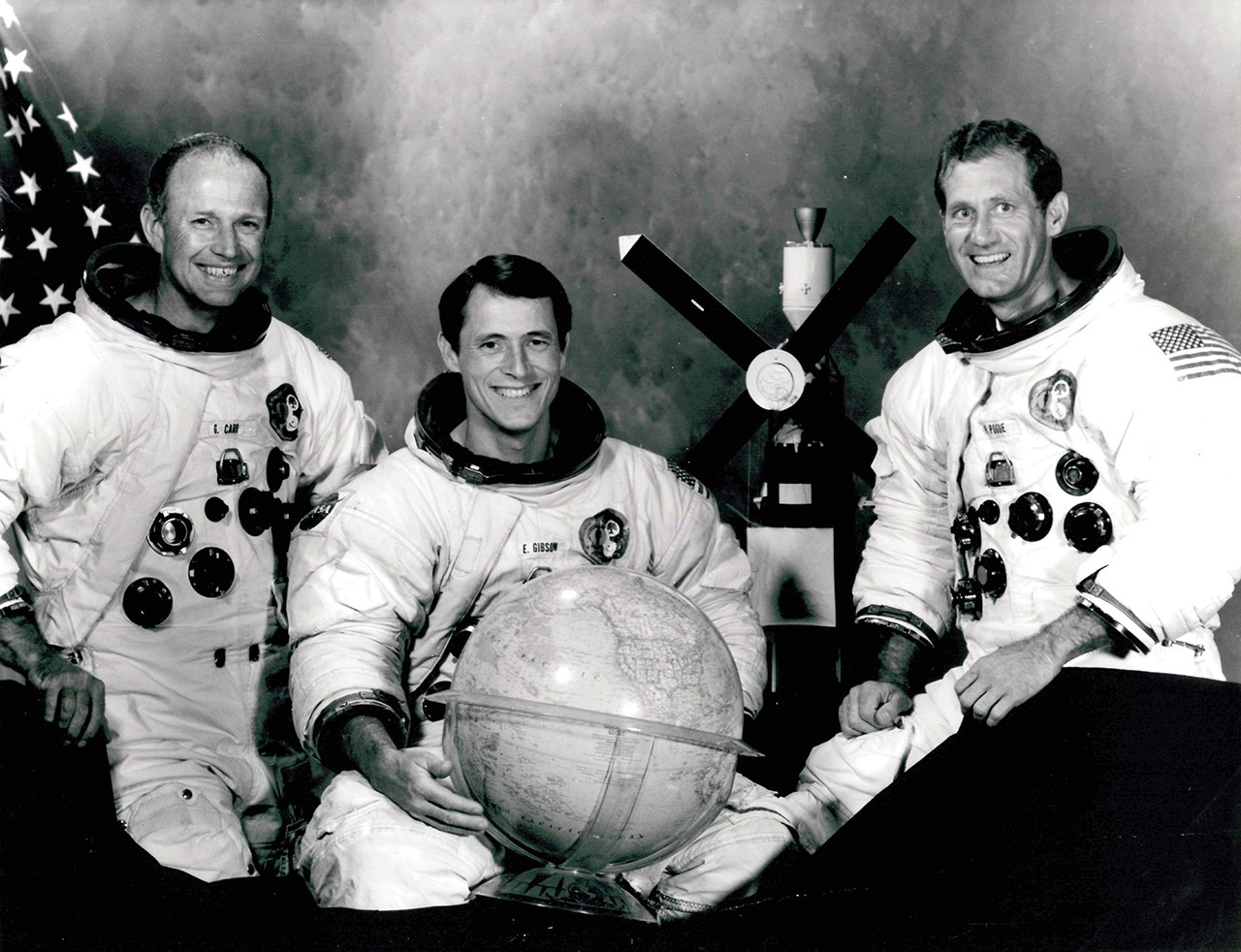 |
| Astronauts Gerald P. Carr, Edward G. Gibson, and William R. Pogue, August 1973 Unknown photographer Photographic print; 8 1/2 x 11 in. 92.41.7 Gift of Loral Aeronutronic |
Only a Gibson is Good Enough!
Technological advances were not the only thing to come out of the Newport Beach facility. A scientist named Edward G. Gibson worked at the facility as a Senior Research Scientist working on plasma physics research with the Applied Research Laboratories up until he moved over to NASA in 1964. Over the next few years, Gibson trained to be a scientist-astronaut. Involved in a great many space missions in one capacity or another, in the early 1970s he was selected as a crew member for the fourth Skylab mission. Skylab had been launched in early 1973 as the first American habitable space station. Though it encountered several issues early in its operation, its three manned missions, Skylab-2 through Skylab-4, were all incredibly valuable test runs of long-term human habitation in space. Gibson, who is in the middle of the above photograph, was joined by Gerald P. Carr, the mission’s commander, and William R. Pogue, the mission’s pilot. Gibson was primarily responsible for overseeing the 56 successful experiments that the crew conducted over the 84 days they spent aboard Skylab. It was, at the time, the longest crewed flight in the history of space exploration.
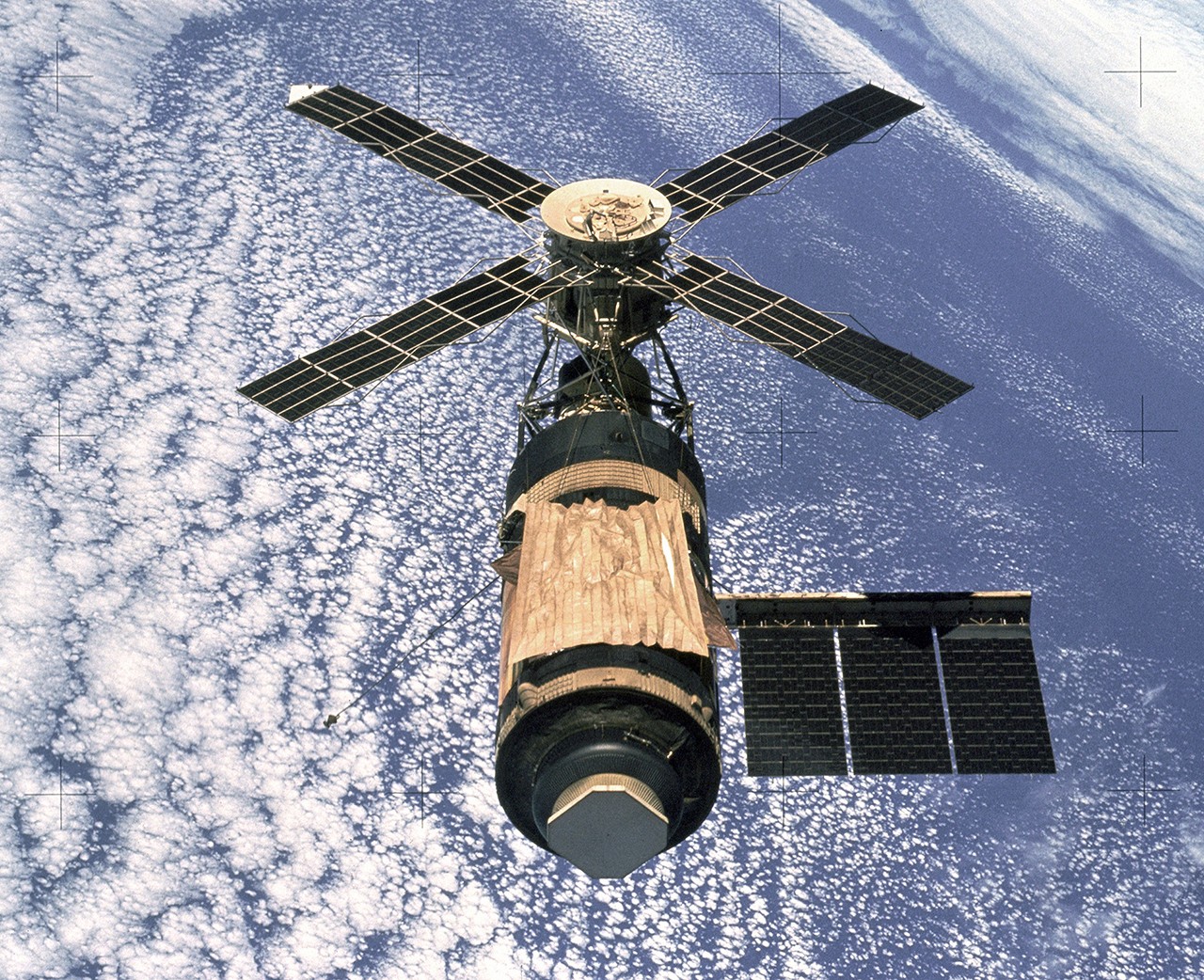 |
| Skylab Orbital Workshop in Earth Orbit, February 8, 1974 |
Skyfall
Despite having been a great triumph for NASA, as well as proof that humans could live and conduct experiments in space for a prolonged period of time, Skylab was only used for four separate missions in its first year. After that point, the orbit of Skylab began to slowly degrade, and on July 11, 1979 the base disintegrated upon re-entering the earth’s atmosphere.
Like Skylab, Ford Aerospace experienced a similarly Icarian rise and fall. Amidst cuts to defense spending and mounting allegations of mismanagement, especially of the Newport Beach facility, the division was ultimately sold to the Loral Corporation in 1990. The photographs and ephemera in this post were donated to the Bowers by Loral just two years after the sale. As the transfer did not include the lease of the land in Newport Beach, the facility there was dismantled, rezoned, and parceled into the residential units that are today bounded by Bison Ave., MacArthur Blvd., Ford Rd., and Jamboree.
Text and images may be under copyright. Please contact Collection Department for permission to use. Information subject to change upon further research.

Comments 1
It was not mismanagement at the Newport Beach site that started the downfall, it was Ford Motor Co. who bought the Aeronutronic brand and then abandoned it when having an aerospace business in the Corporate portfolio was no longer in vogue.